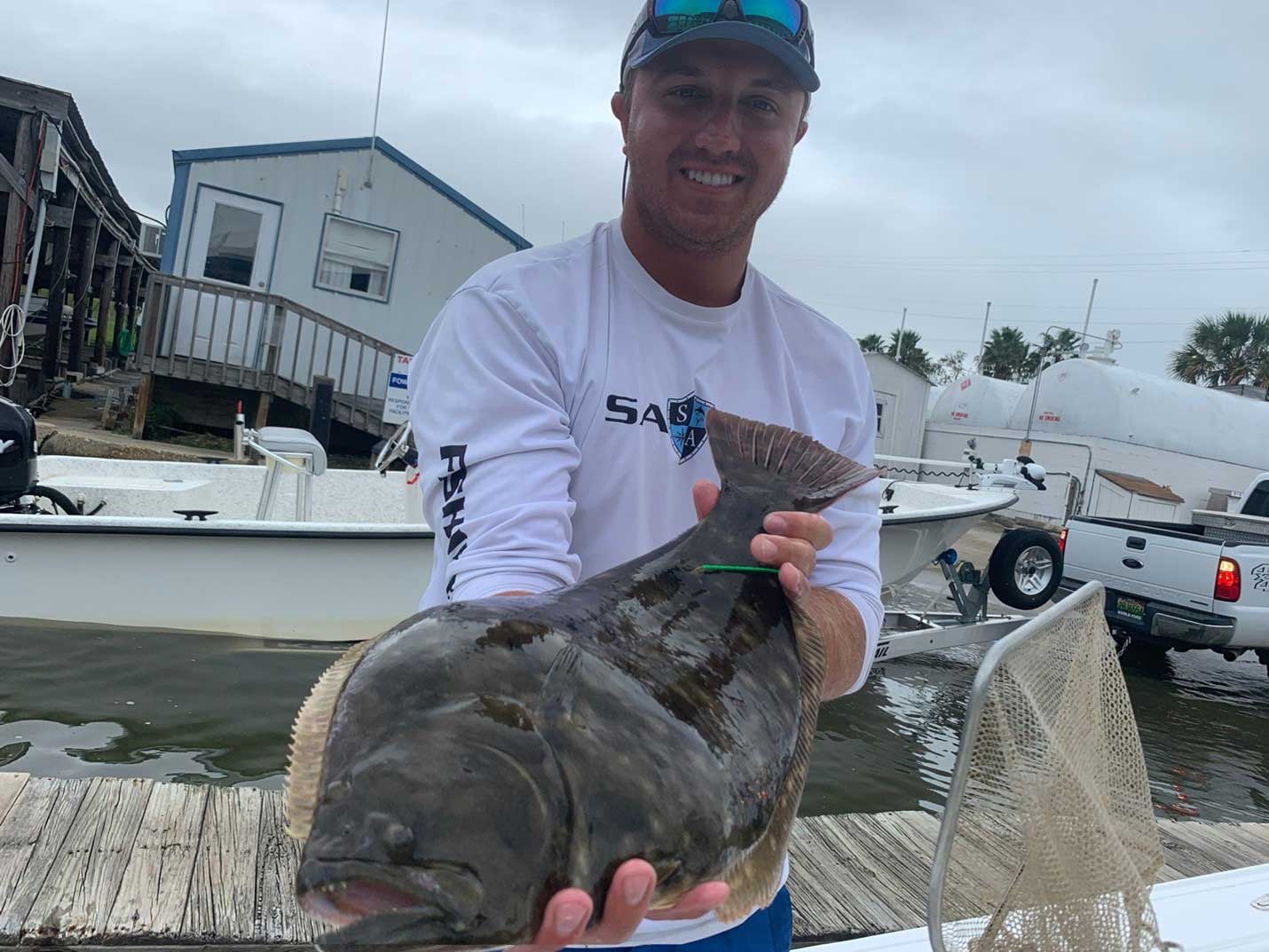Coastal Alabama Acoustic Monitoring Program (CAAMP)
Project Leader:Dylan Kiene, Ph.D. Student
Project Details
Background:
The Coastal Alabama Acoustic Monitoring Program (CAAMP) is a long-standing monitoring program that has previously tracked the movement of several estuarine species including Red Drum (Sciaenops ocellatus) and Spotted Sea Trout (Cynoscion nebulosus). In 2019 CAAMP was redesigned to study Southern Flounder (Paralichthys lethostigma). Southern Flounder exhibit sexual dimorphism - a distinct difference in the size, appearance, and life history between sexes. Male Southern Flounder typically don’t get very large (<12in) and spend most of their lives offshore, while the females grow larger and mature in the estuarine waters of the Mobile Bay area. When female Southern Flounder reach maturity they migrate offshore during the late fall/winter to spawn.

Objectives:
To determine female Southern Flounder offshore migration during later fall/winter
Approach:
To quantify this migration, an array of 68 acoustic monitoring receivers was placed throughout Mobile bay and its tidal rivers. These acoustic monitors, known as hydrophones, act as underwater listening devices that hone in on the frequency emitted by acoustic tags. Southern Flounder are fitted with acoustic tags in the early fall and tracked throughout the fall, winter, and spring months to document their spawning migration and seasonal movement patterns across size ranges and year class.
Funding Sources: Alabama Marine Resource Division, CCA Alabama, University of South Alabama
